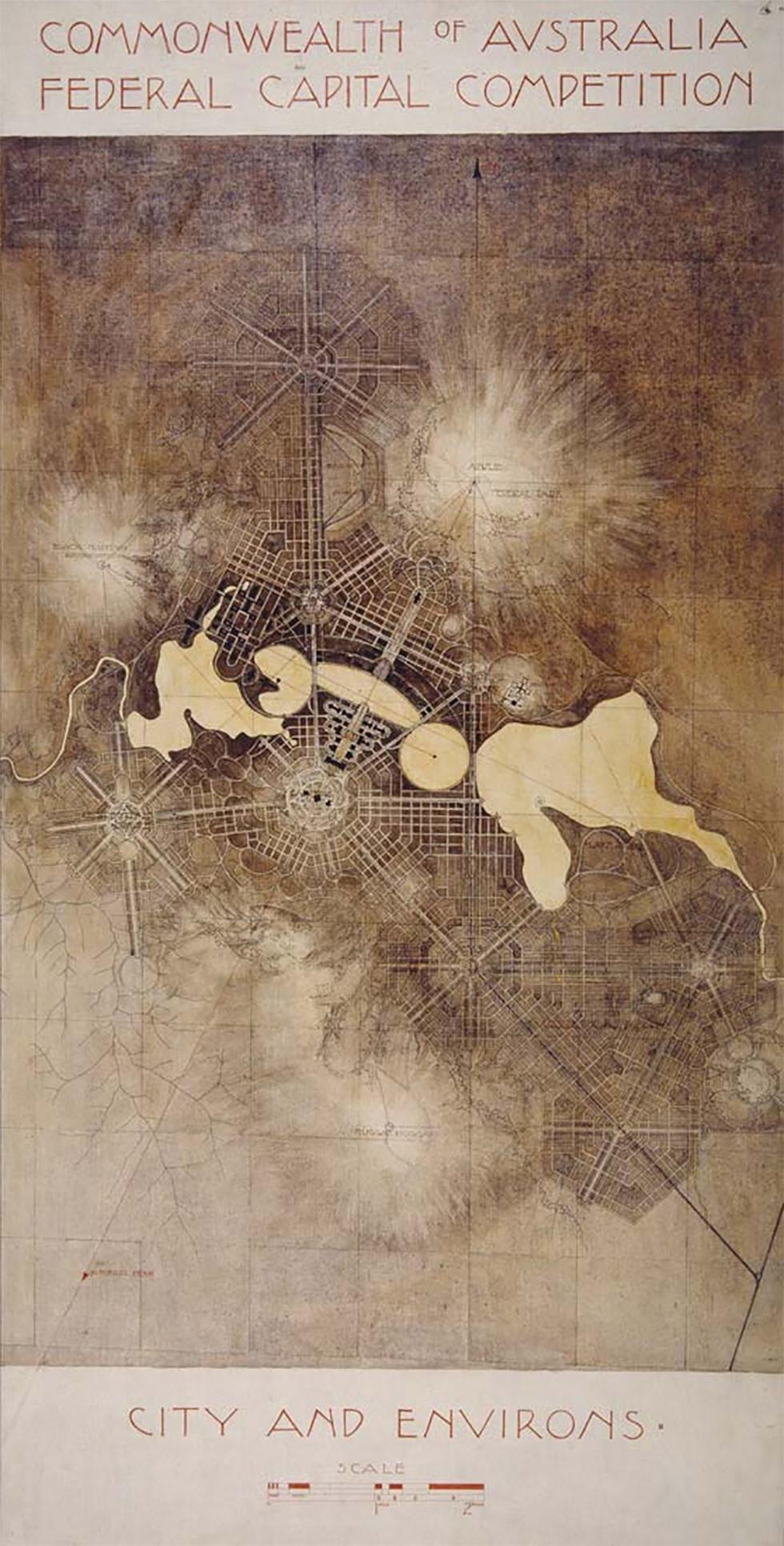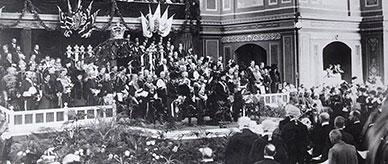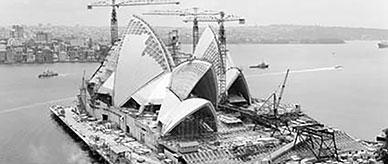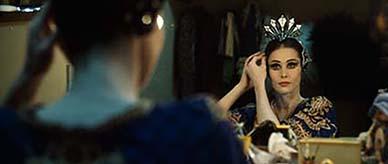


About this record
This drawing, by Marion Mahoney Griffin, is part of the winning entry in the 1911 to 1912 Federal Capital City Design Competition. The entry was submitted by United States architect Walter Burley Griffin.
The Griffin plan for Canberra
In 1911, the Australian government launched an international competition to find a design for its new national capital. 137 designs were received from all over the world. They included an entry from American architect Walter Burley Griffin. His wife, architect Marion Mahoney Griffin, produced the drawings illustrating his ideas.
In May 1912, Griffin’s design was announced as the winner.
Walter Burley Griffin’s plan for Canberra was based on the natural topography of the site. He proposed a city located centrally between 3 hills (Black Mountain, Mount Ainslie and Mugga Mugga) and north and south of an ornamental lake made up of a series of linked basins. The city structure would be based on 2 main axes: a land and water axis. Within would lie a triangular government group, including Parliament House on Camp Hill (the current site of Old Parliament House).
Despite Griffin’s win, an Australian government board appointed to review the finalists' designs decided not to adopt any of them, instead creating its own. After much controversy, and a change of government, Walter Burley Griffin was invited to Australia to discuss his winning design. In October 1913, he was appointed Federal Capital Director of Design and Construction.
Years of delay followed. This was partly because of a decline in spending due to the outbreak of World War I, and partly due to poor communication between Griffin and other members of the Federal Capital Administration.
In 1920, Griffin left Canberra to work as an architect in Melbourne, and his formal relationship with Canberra came to an end.
Acknowledgments
Learning resource text © Education Services Australia Limited and the National Archives of Australia 2010.
Related themes
Need help with your research?
Learn how to interpret primary sources, use our collection and more.



